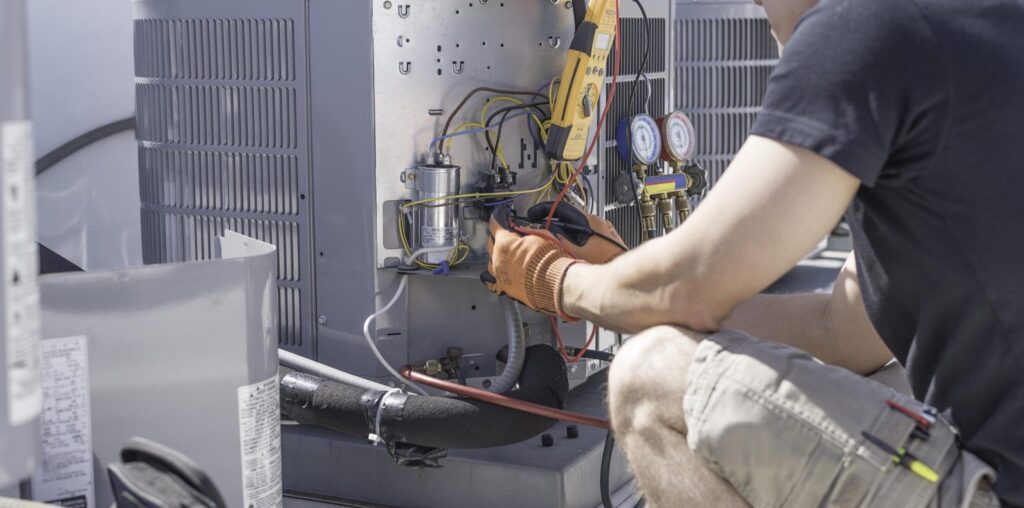As winter settles into Flagstaff, AZ, your home’s heating system becomes more than just a convenience—it’s essential. For homeowners relying on gas furnaces, knowing when it’s time for a furnace replacement can mean the difference between staying warm and facing costly emergency repairs. A failing furnace doesn’t just reduce comfort; it can compromise safety and drive up energy costs.
If you’re unsure about the condition of your furnace or want to understand the process and benefits of upgrading, this guide will walk you through everything you need to know about gas furnace replacement—from signs it’s time to upgrade to what to expect during installation.
Why Furnace Replacement May Be Necessary
Over time, even the most well-maintained furnaces wear out. Most gas furnaces have a lifespan of 15 to 20 years. After that, components begin to break down more frequently, and the unit becomes less energy efficient. Replacing an old or unreliable furnace can improve heating performance, reduce your energy bills, and enhance indoor air quality.
If you’re living in Flagstaff, AZ, where cold temperatures are a regular part of the winter season, a reliable furnace isn’t just about comfort—it’s a necessity. Cold indoor temperatures can lead to frozen pipes, structural damage, and potential health risks. A modern gas furnace can provide consistent heat with better energy usage, keeping your home safe and cozy.
Signs You May Need a New Furnace
It’s not always obvious when a furnace is on its last legs. Here are some key indicators that a furnace replacement may be in your near future:
1. Rising Energy Bills
If you’ve noticed a steady increase in your heating bills despite normal usage, your furnace may be losing efficiency. Older systems often consume more fuel to produce the same level of heat.
2. Frequent Repairs
If you’re calling your HVAC technician more than once or twice a year for repairs, it may be more cost-effective to invest in a new unit rather than constantly fixing the old one.
3. Uneven Heating
Are some rooms colder than others? A failing furnace may struggle to distribute heat evenly throughout your home.
4. Noisy Operation
Clanking, banging, or rattling sounds can point to worn-out components, especially if your furnace is more than a decade old.
5. Yellow Burner Flame
A properly functioning gas furnace should produce a blue flame. A yellow flame could indicate incomplete combustion and even a potential carbon monoxide issue.
Choosing the Right Replacement Furnace
When it’s time for a furnace replacement, selecting the right model is essential for both performance and energy savings. Here’s what to consider:
- Efficiency Rating (AFUE): Look for a furnace with a high AFUE (Annual Fuel Utilization Efficiency) rating. Models rated 90% or higher are considered highly efficient and can significantly cut your heating costs.
- Size and Capacity: A unit that’s too small won’t heat your home adequately, while one that’s too large will cycle on and off too frequently, wasting energy. A professional should perform a load calculation to determine the right size for your space.
- Variable-Speed Blowers: These allow your furnace to adjust its airflow speed, improving comfort and efficiency.
- Warranty and Brand Reputation: Choose a reliable brand and check the warranty terms to protect your investment.
What to Expect During Furnace Replacement
Replacing a gas furnace typically takes a full day, though the exact time may vary based on the complexity of the job. Here’s a general overview of what happens during the process:
1. Evaluation and Quote
Your technician will assess your current system, inspect ductwork, and determine the best replacement options. A detailed quote will include the cost of the unit, labor, and any additional materials needed.
2. Removal of Old Furnace
The existing unit is safely disconnected and removed. This includes shutting off the gas supply, disconnecting the electrical wiring, and detaching the venting system.
3. Installation of New System
The new furnace is installed and connected to existing ductwork, wiring, and gas lines. The technician ensures proper airflow, venting, and safety protocols are followed.
4. Testing and Calibration
Once installed, the system is tested for efficiency and safety. The thermostat is calibrated, and you’ll receive instructions on how to use and maintain your new furnace.
Cost of Furnace Replacement in Flagstaff, AZ
The cost of furnace replacement varies depending on factors like the type of furnace, home size, installation complexity, and energy efficiency. In Flagstaff, AZ, homeowners typically spend between $4,000 and $8,000 for a standard gas furnace replacement, including installation.
High-efficiency models may cost more upfront but offer long-term savings through lower energy bills. Be sure to ask about financing options, utility rebates, or energy-efficiency tax credits that may help offset the cost.
Maintenance Tips to Extend Your Furnace’s Life
After installation, regular maintenance is key to maximizing your furnace’s lifespan. Here’s how to keep your new system running smoothly:
- Change filters every 1–3 months.
- Schedule annual professional tune-ups.
- Keep vents and ducts clean and unobstructed.
- Ensure the area around your furnace is clean and free of debris.
Conclusion
Replacing your gas furnace is a major decision, but it’s also an opportunity to improve your home’s comfort, efficiency, and safety. If your current system is outdated, noisy, or underperforming, it might be time for a furnace replacement. With proper planning, the right equipment, and experienced installation, you’ll enjoy reliable heat for years to come.
For professional service and expert installation in Flagstaff, AZ, homeowners turn to trusted local providers like SQU Services INC for dependable furnace replacement solutions.
FAQs
Q: How long does a gas furnace typically last?
A: Most gas furnaces last 15 to 20 years with proper maintenance.
Q: Is it worth upgrading to a high-efficiency furnace?
A: Yes, high-efficiency furnaces can significantly lower your heating bills and reduce environmental impact.
Q: What size furnace do I need?
A: Sizing depends on your home’s square footage, insulation, and climate. An HVAC technician should perform a load calculation.
Q: Can I replace my furnace myself?
A: Furnace replacement involves gas and electrical work and should only be performed by licensed professionals.
Q: How often should I service my new furnace?
A: At least once a year—preferably before the heating season begins.



